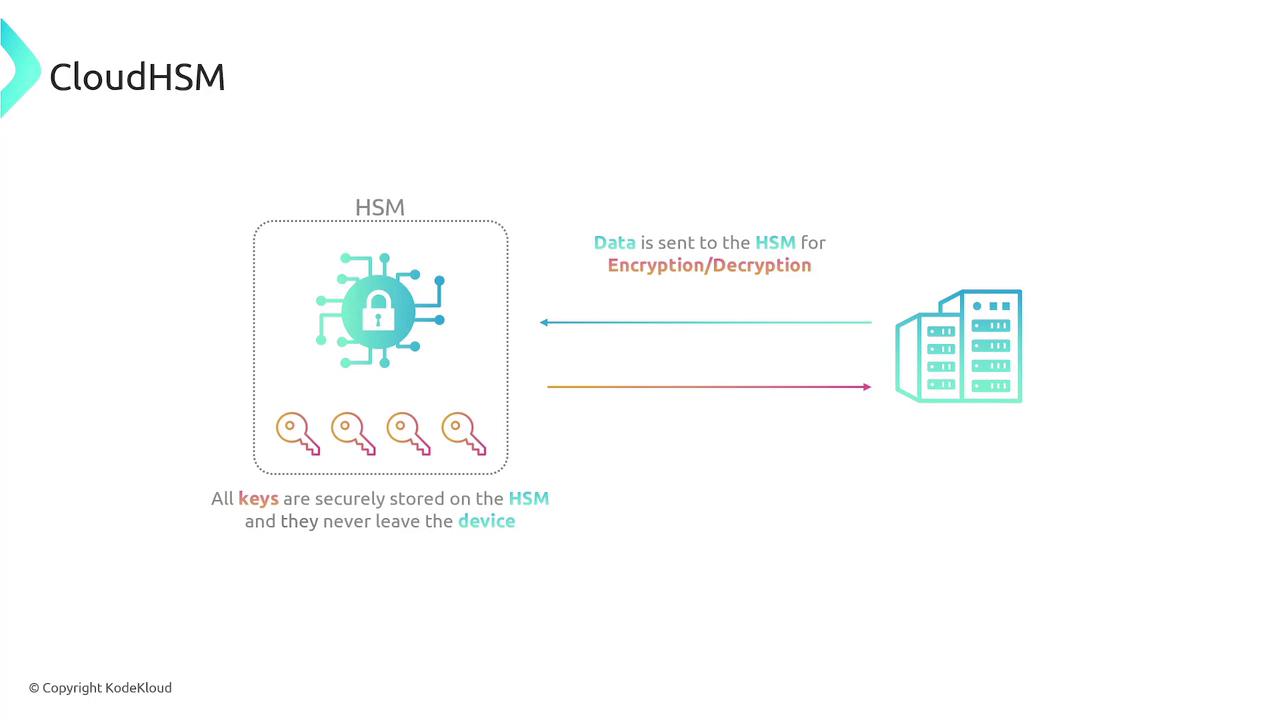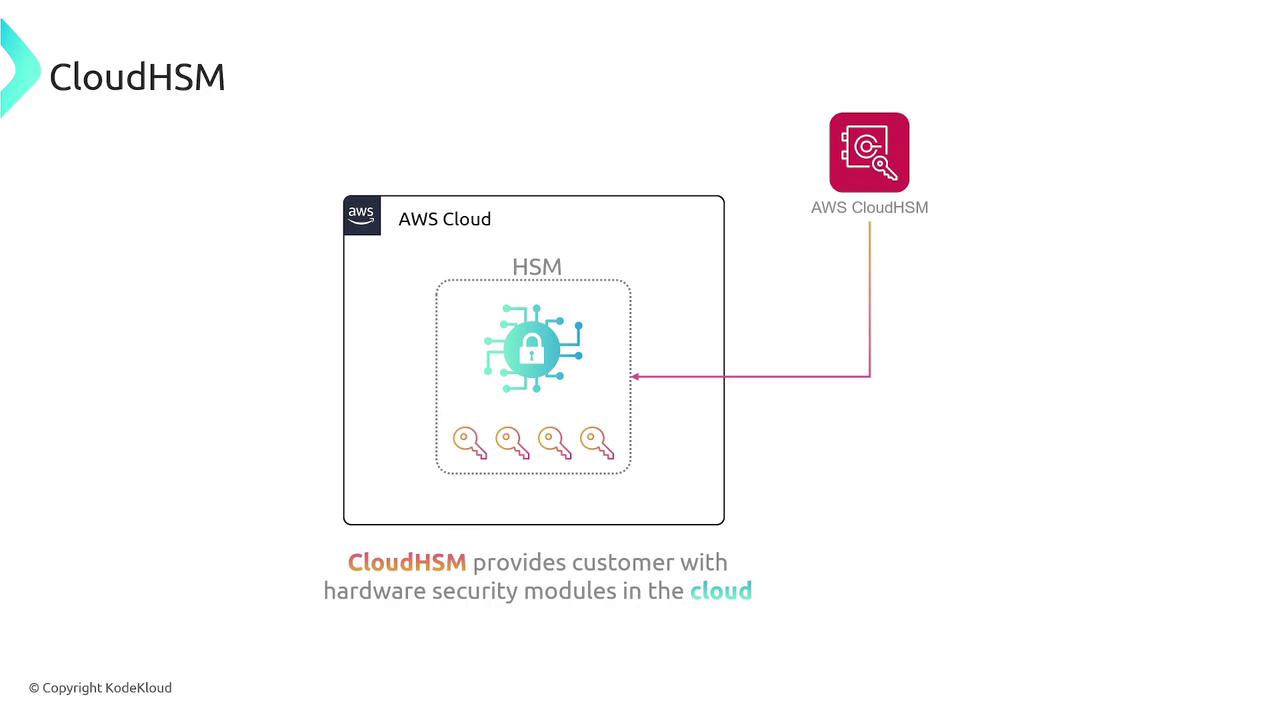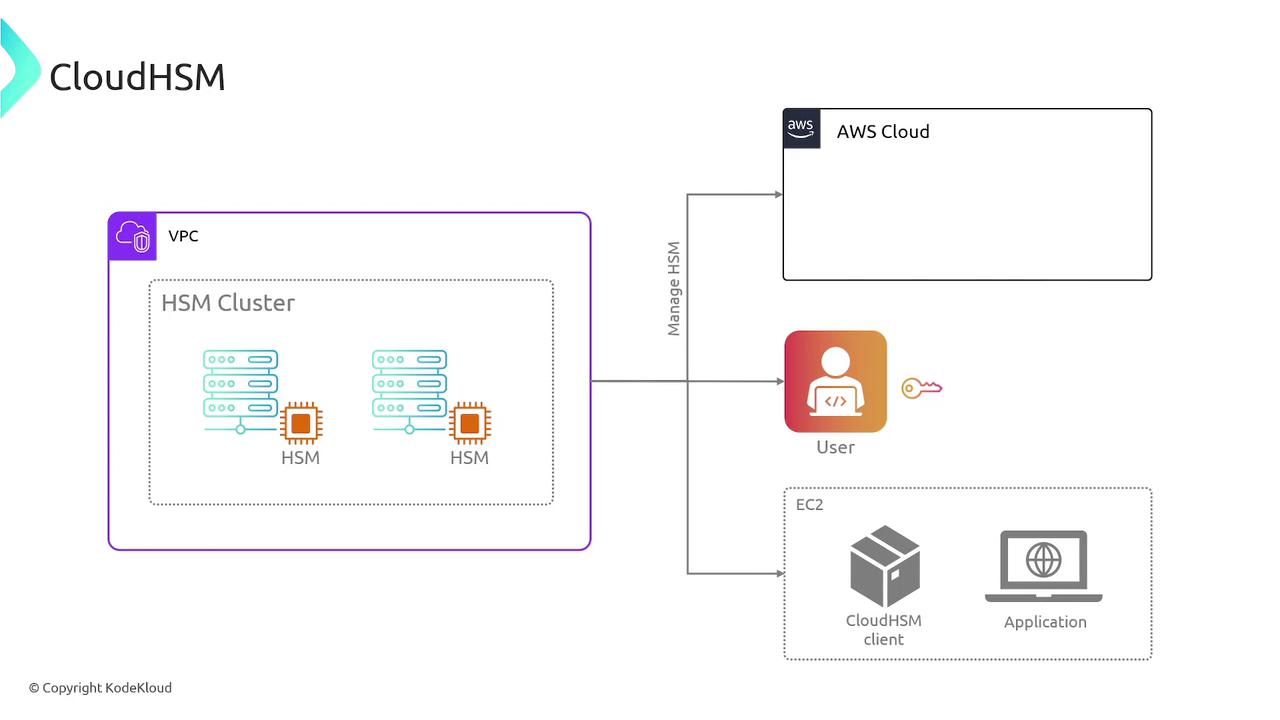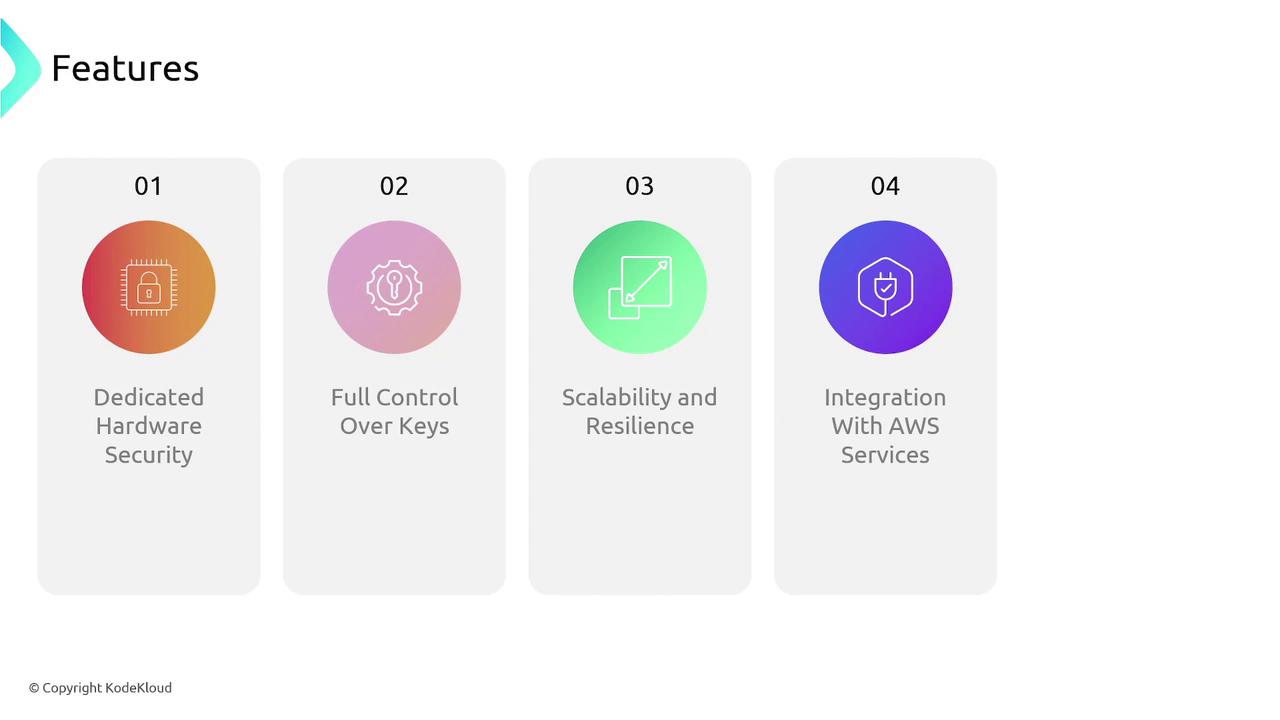AWS Solutions Architect Associate Certification
Services Security
CloudHSM
In this lesson, we explore CloudHSM, AWS's managed hardware security module service designed to centralize and secure cryptographic key management. While AWS Key Management Service (KMS) leverages encryption keys to store data in a secure and unreadable format, managing keys across various locations can sometimes increase the risk of accidental key exposure. CloudHSM mitigates this risk by consolidating key management into a single dedicated device.
How CloudHSM Works
A hardware security module (HSM) addresses key exposure by storing all your cryptographic keys in one secure device. This dedicated module is responsible for all cryptographic operations, including encryption and decryption. When you need to encrypt or decrypt data, you simply send it to the HSM, which processes the operation while keeping the keys securely stored within the device.

This single point of key management minimizes the potential for key leakage, significantly enhancing the security of your cryptographic processes.
Managed Service Advantages
CloudHSM extends the traditional HSM model by offering a managed service in the cloud. Instead of investing in and maintaining your own HSM hardware, AWS manages the infrastructure for you. This cloud-based solution allows you to focus on your applications while securely processing encryption and decryption requests.

Scalable and Resilient HSM Clusters
CloudHSM supports deployment in clusters, enabling multiple HSM modules to work in tandem. This architecture not only improves performance by positioning the HSM as close as possible to your AWS services but also enhances scalability and availability. Unlike on-premises HSMs that require external communication from AWS services, cloud-deployed HSMs process requests more quickly and reliably.

Client Integration
To connect with a CloudHSM cluster, install the CloudHSM client on your EC2 instances or on-premises systems. This client facilitates cryptographic operations by securely communicating with the HSM. One key differentiation between CloudHSM and AWS KMS is the management of keys: with CloudHSM, only you have access to your keys. Although AWS manages the service, it does not have access to your encryption keys—a critical consideration for those requiring enhanced security.
Key Benefits of CloudHSM
Benefits of CloudHSM
- Dedicated HSM in the cloud that isolates and strictly controls access to your cryptographic keys
- Full control over encryption keys and operations, ensuring that only authorized users can access your data
- Scalable architecture that starts with a single HSM and can expand to clusters for improved performance and availability
- Seamless integration with multiple AWS services for robust data protection
- Enhanced compliance capabilities with a hardware-based key management solution

CloudHSM offers a compelling solution for organizations seeking a highly secure, scalable, and managed hardware security module service in the cloud. By consolidating key management and providing exclusive control over encryption keys, CloudHSM significantly reduces the risk of key exposure while enhancing overall security and compliance.
Watch Video
Watch video content